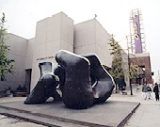11-15 July 2011 |
 |
 |
 |
 |
 |
 |
|
New Talent Award
Contact
Us gensci(PUT_AT_SIGN_HERE)fields.utoronto.ca
|
 |

| MINISYMPOSIA |
|
Jan Verwer Memorial Minisymposium, I Organized
by Christopher Budd
|
| SPEAKERS | |
| Jason Frank, CMU & University of Amsterdam | |
|
Martin Berzins, University of Utah |
Rethinking
Scientific Computing Software for Post-Petascale.
|
| John Butcher, University of Auckland | Sixty
years of stiff solvers The seminal paper of Curtiss and Hirschfelder was communicated to the Proceedings of the National Academy of Sciences in 1951 and published in the following year. The use of the backward Euler method, which can be regarded as the first stiff solver, was advocated as a stable alternative to the forward Euler method. Techniques for obtaining stable, accurate and efficient solutions to stiff problems have become an important field of research in many institutions and laboratories throughout the world, not least being in the work of Jan Verwer and his colleagues at the CWI. This talk will not attempt to survey the enormous history of this subject but will give an account of some items from this history of interest to the author. |
| Jim Verner, Simon Fraser University | A
Retrospective on the Derivation of Explicit Runge-Kutta Pairs
(slides of talk) To improve the efficiency of estimating solutions to initial value problems in ordinary differential equations C. Runge and W. Kutta designed a recursive evaluation approach to obtaining estimates within a {\it step} that led to a high-order polynomial approximation (1895-1905). As Kutta had difficulty with obtaining correct coefficients of a method of order 5, a mathematical approach to tabulating and solving the polynomial order conditions evolved, primarily after 1957. Although Butcher's proposal of 'simplifying conditions' led to new families of methods, solution of the order conditions remained a challenge. The proposal to provide a pair of RK approximations to control the step-by-step error increased this complexity. Yet, Butcher's "Algebraic Theory of Integration Methods" and new pairs up to orders 8,9 found by Fehlberg motivated new approaches, and derivation of better Runge-Kutta pairs. This talk will survey some of the strategies used since 1970 to find new formulas, and will suggest how these tools may be applied to finding algorithms of different structures or for different problems. |